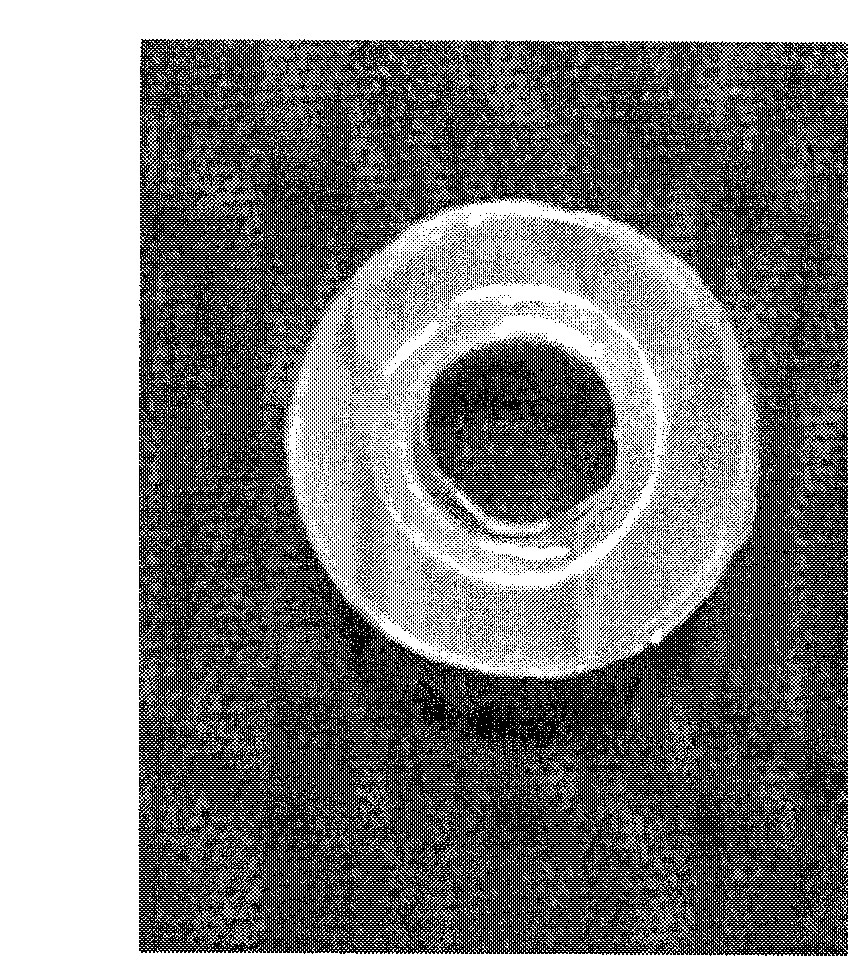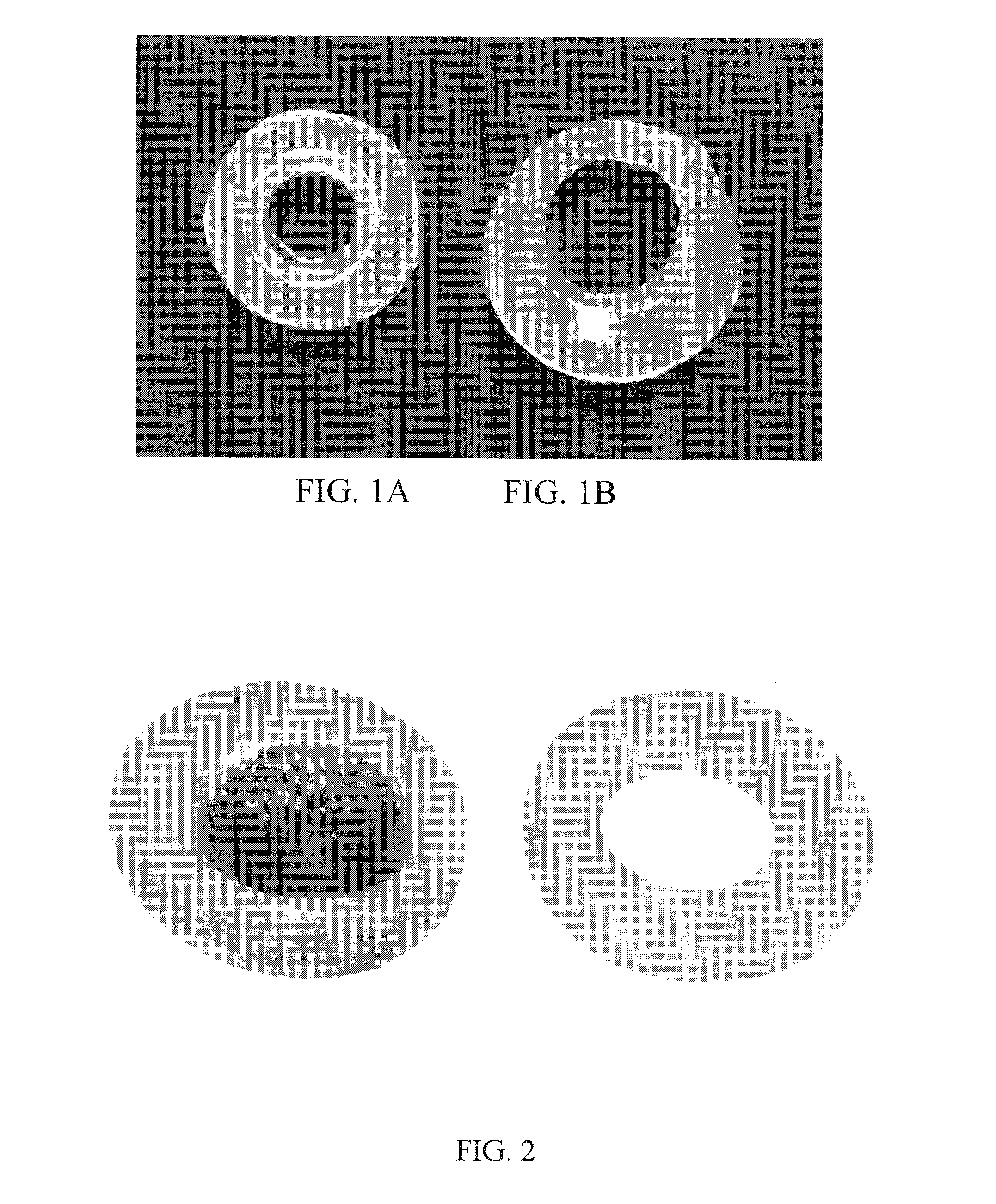Implantable therapeutic device and methods of making
a technology of therapeutic devices and injections, applied in the direction of drug compositions, peptide/protein ingredients, metabolic disorders, etc., can solve the problems of inability to mimic the exquisite insulin secretory process in response to insulin injections, blood-glucose levels dysregulation,
- Summary
- Abstract
- Description
- Claims
- Application Information
AI Technical Summary
Benefits of technology
Problems solved by technology
Method used
Image
Examples
example 1
Structure of the Implantable Therapeutic Device
[0092]This Example provides an embodiment of the implantable therapeutic device. The device, with the top-most PDMS ring removed, is shown in FIGS. 1 and 2. There are three PDMS rings: one on the top, one on the bottom (˜1 mm thick, ˜14 mm outer diameter, ˜9.5 mm inner diameter), and one in the center (˜2 mm thick, ˜14 mm outer diameter, ˜12 mm inner diameter). Insulin-secreting cells are entrapped in alginate beads (as shown in blue in FIG. 2 for visual effect), and these beads are entrapped in alginate that fills the core of the construct. The ledge that keeps the alginate core within the PDMS construct is visible.
example 2
Methods of Manufacturing the Implantable Therapeutic Device
[0093]This Example provides an exemplified method for manufacturing of the implantable cell encapsulation device. First, biomedical-grade polydimethylsiloxane (PDMS: Factor II, Lakeside Ariz.) is formed into uniformly thick sheets of 1 and 2 mm. If NMR coils are to be inserted, they are placed into the thicker layer while the PDMS is allowed to cure. A cork borer is used to create the desired inner and outer diameters. These layers are attached to each other with liquid PDMS. Because PDMS is a cross-linked polymer, the PDMS layers bond to each other. These PDMS rings create an outer housing into which the alginate inner housing can be situated. Because alginate does not stick to PDMS, the center slab inner diameter (—11-12 mm) is slightly larger than the outer slabs inner diameter (−9.5 mm). This creates a center ledge, which traps the gelled alginate into the outer housing. The PDMS is acid washed for 1 hour in 1M HCl to re...
example 3
Therapeutic Effects of the Implantable Therapeutic Device
[0121]Mouse models of diabetes offer fertile ground to study β-cell regeneration, effects of hyperglycemia on organ systems, and cures for diabetes. In the course of diabetic research, rendering an animal diabetic is relatively easy; however, maintaining hyper- or normoglycemic states for extended periods remains challenging. To solve this problem, the present invention provides implantable therapeutic devices comprised of insulin-secreting cells entrapped in biocompatible materials. When implanted, cells in the device sense the recipient's glucose levels and secrete insulin appropriately, thereby regulating blood sugar levels.
[0122]This Example illustrates the in vivo results of the present device upon implantation. In a first set of experiments, four C3H / HeN female mice were rendered diabetic (defined herein as having fasting blood glucoses >300 mg / kg for 3 days) through a single intravenous (i.v.) injection of alloxan (62.5...
PUM
| Property | Measurement | Unit |
|---|---|---|
| Fraction | aaaaa | aaaaa |
| Fraction | aaaaa | aaaaa |
| Fraction | aaaaa | aaaaa |
Abstract
Description
Claims
Application Information
 Login to View More
Login to View More - R&D
- Intellectual Property
- Life Sciences
- Materials
- Tech Scout
- Unparalleled Data Quality
- Higher Quality Content
- 60% Fewer Hallucinations
Browse by: Latest US Patents, China's latest patents, Technical Efficacy Thesaurus, Application Domain, Technology Topic, Popular Technical Reports.
© 2025 PatSnap. All rights reserved.Legal|Privacy policy|Modern Slavery Act Transparency Statement|Sitemap|About US| Contact US: help@patsnap.com



